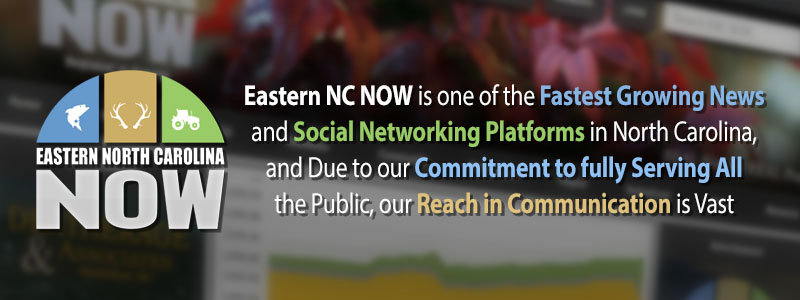The Human Touch Revealing All that is Real
State Ranks High in College Funding
Publisher's note: This post appears here courtesy of the Carolina Journal, and written by John Hood, Chairman of John Locke Foundation.

North Carolina appropriates less taxpayer money to state colleges and universities in real terms than it did before the onset of the Great Recession. Tuition has risen markedly and now accounts for a larger share of total revenue. But our state remains one of the most generous in the country when it comes to funding higher education.
How can all three statements be true? Because North Carolina's starting position was so high.
According to the latest report from the State Higher Education Executive Officers (SHEEO) Association, North Carolina appropriated $12,496 per full-time-equivalent student in 2008. Only Wyoming and Alaska reported higher funding levels that year - and because their enrollments are so small, they aren't really comparable to North Carolina, anyway.
In 2018, North Carolina's appropriation per student was $10,429. Although obviously lower than it was 10 years ago, that figure actually represents a modest increase from 2013. If you graphed the data, it would look like UNC appropriations fell off a cliff during the recession, then began a slow but steady climb.
Average tuition rose as appropriations dropped, but not dollar-for-dollar. In 2008, average tuition per student was $3,745, accounting for about 23 percent of North Carolina's $16,241 per student in total educational revenue. In 2018, tuition averaged $5,515 per student, or about 35 percent of the $15,944 in revenue per student.
In other words, while things have changed somewhat, it would be a stretch to describe the change as radical. Having previously ranked third, North Carolina now ranks sixth in the nation in higher-education appropriations per student. In only seven other states is tuition lower as a share of total educational revenues.
Interstate comparisons are always challenging, and these statistics from SHEEO are no exception. They've been adjusted in three potentially debatable ways. First, they are adjusted for state differences in enrollment mix between two-year and four-year institutions. Second, they are adjusted for state differences in cost of living. Third, they are adjusted for inflation with a price index specific to higher education.
Still, these numbers do tell us something important not just about higher education in North Carolina but about policy reform in general: change tends to be incremental, not dramatic.
A traditional argument for taxpayer subsidy of education reflects the economic concept of "positive externalities." When students obtain valuable knowledge, skills, and credentials, they and their families benefit in the form of higher pay, a better standard of living, and a greater sense of fulfillment and satisfaction. But other people in society can benefit, too. They can get better employees or employers, benefit from new inventions and innovations, and live in safer, healthier, and better-led communities because those communities contain more, and better-educated, college graduates.
Whether these purported benefits actually materialize for any particular student, or collectively at a scale large enough to justify the cost, is a matter for another day. Assume that, on average, they happen as advertised. What is the likely share of those benefits that are external to the parties directly in on the transaction - students, their families, and those who work in higher education?
If you think three-quarters or more of the benefits are claimed by society as a whole rather than by students and families, then North Carolina's previous level of subsidy probably made sense to you. But I doubt you'd have much of a leg to stand on.
Our state constitution requires that the benefits of our public colleges and universities be "as far as practicable ... extended to the people of the state free of expense." In recent years, North Carolina's funding policies have become more practicable. Now let's focus on the most-pressing issue: reducing the real cost of delivering educational services, rather than just shifting the cost from one set of pockets to another.
That may mean employing technology, redesigning programs, redistributing them among campuses, and scrutinizing non-teaching positions. And, yes, it probably means doing these things incrementally, not suddenly.
John Hood (@JohnHoodNC) is chairman of the John Locke Foundation and appears on "NC SPIN," broadcast statewide Fridays at 7:30 p.m. and Sundays at 12:30 p.m. on UNC-TV.
Go Back

North Carolina appropriates less taxpayer money to state colleges and universities in real terms than it did before the onset of the Great Recession. Tuition has risen markedly and now accounts for a larger share of total revenue. But our state remains one of the most generous in the country when it comes to funding higher education.
How can all three statements be true? Because North Carolina's starting position was so high.
According to the latest report from the State Higher Education Executive Officers (SHEEO) Association, North Carolina appropriated $12,496 per full-time-equivalent student in 2008. Only Wyoming and Alaska reported higher funding levels that year - and because their enrollments are so small, they aren't really comparable to North Carolina, anyway.
In 2018, North Carolina's appropriation per student was $10,429. Although obviously lower than it was 10 years ago, that figure actually represents a modest increase from 2013. If you graphed the data, it would look like UNC appropriations fell off a cliff during the recession, then began a slow but steady climb.
Average tuition rose as appropriations dropped, but not dollar-for-dollar. In 2008, average tuition per student was $3,745, accounting for about 23 percent of North Carolina's $16,241 per student in total educational revenue. In 2018, tuition averaged $5,515 per student, or about 35 percent of the $15,944 in revenue per student.
In other words, while things have changed somewhat, it would be a stretch to describe the change as radical. Having previously ranked third, North Carolina now ranks sixth in the nation in higher-education appropriations per student. In only seven other states is tuition lower as a share of total educational revenues.
Interstate comparisons are always challenging, and these statistics from SHEEO are no exception. They've been adjusted in three potentially debatable ways. First, they are adjusted for state differences in enrollment mix between two-year and four-year institutions. Second, they are adjusted for state differences in cost of living. Third, they are adjusted for inflation with a price index specific to higher education.
Still, these numbers do tell us something important not just about higher education in North Carolina but about policy reform in general: change tends to be incremental, not dramatic.
A traditional argument for taxpayer subsidy of education reflects the economic concept of "positive externalities." When students obtain valuable knowledge, skills, and credentials, they and their families benefit in the form of higher pay, a better standard of living, and a greater sense of fulfillment and satisfaction. But other people in society can benefit, too. They can get better employees or employers, benefit from new inventions and innovations, and live in safer, healthier, and better-led communities because those communities contain more, and better-educated, college graduates.
Whether these purported benefits actually materialize for any particular student, or collectively at a scale large enough to justify the cost, is a matter for another day. Assume that, on average, they happen as advertised. What is the likely share of those benefits that are external to the parties directly in on the transaction - students, their families, and those who work in higher education?
If you think three-quarters or more of the benefits are claimed by society as a whole rather than by students and families, then North Carolina's previous level of subsidy probably made sense to you. But I doubt you'd have much of a leg to stand on.
Our state constitution requires that the benefits of our public colleges and universities be "as far as practicable ... extended to the people of the state free of expense." In recent years, North Carolina's funding policies have become more practicable. Now let's focus on the most-pressing issue: reducing the real cost of delivering educational services, rather than just shifting the cost from one set of pockets to another.
That may mean employing technology, redesigning programs, redistributing them among campuses, and scrutinizing non-teaching positions. And, yes, it probably means doing these things incrementally, not suddenly.
John Hood (@JohnHoodNC) is chairman of the John Locke Foundation and appears on "NC SPIN," broadcast statewide Fridays at 7:30 p.m. and Sundays at 12:30 p.m. on UNC-TV.
| Cooking the County Books | Carolina Journal, Editorials, Op-Ed & Politics | John Locke Foundation: Prudent Policy / Impeccable Research - Volume CCCCXXXIV |
Latest Op-Ed & Politics
|
Governor expected to sign into law
Published: Friday, April 26th, 2024 @ 1:48 pm
By: John Steed
|
|
Atheist Soros, although born Jewish, was Nazi collaborator in Hungary in WWII
Published: Friday, April 26th, 2024 @ 11:58 am
By: John Steed
|
|
anti-immigration conservative nationalist beats Social Democrat incumbent 2 to 1
Published: Friday, April 26th, 2024 @ 9:19 am
By: John Steed
|
|
protecting children and parents from gender ideology promoters
Published: Friday, April 26th, 2024 @ 6:45 am
By: John Steed
|
|
Biden wants to push this in public schools and Gov. deSantis says NO
Published: Thursday, April 25th, 2024 @ 9:19 pm
By: John Steed
|
|
eve 45% of Latinos support mass deportation
Published: Thursday, April 25th, 2024 @ 12:40 pm
By: John Steed
|
|
this at the time that pro-Hamas radicals are rioting around the country
Published: Thursday, April 25th, 2024 @ 8:01 am
By: John Steed
|
|
Pro death roundtable
Published: Wednesday, April 24th, 2024 @ 12:39 pm
By: Countrygirl1411
|
|
populist / nationalist anti-immigration AfD most popular party among young voters, CDU second
Published: Wednesday, April 24th, 2024 @ 11:25 am
By: John Steed
|
|
political scheme behhind raid on Mar-a-Lago
Published: Wednesday, April 24th, 2024 @ 9:16 am
By: John Steed
|
|
how many of these will come to North Carolina?
Published: Tuesday, April 23rd, 2024 @ 1:32 pm
By: John Steed
|
|
Barr had previously said he would jump off a bridge before supporting Trump
Published: Tuesday, April 23rd, 2024 @ 11:37 am
By: John Steed
|
























